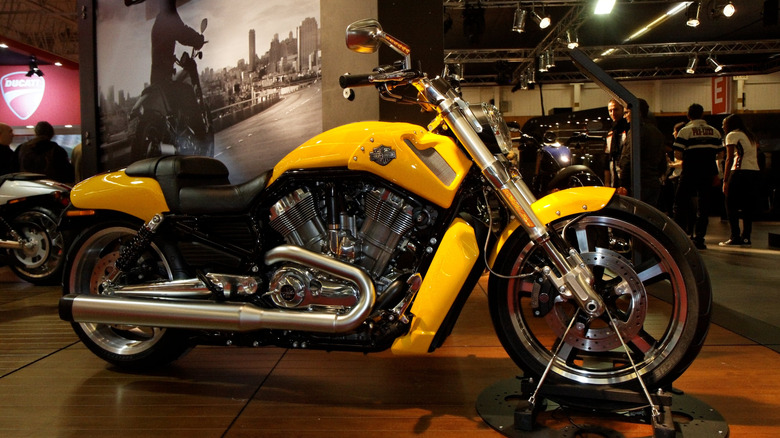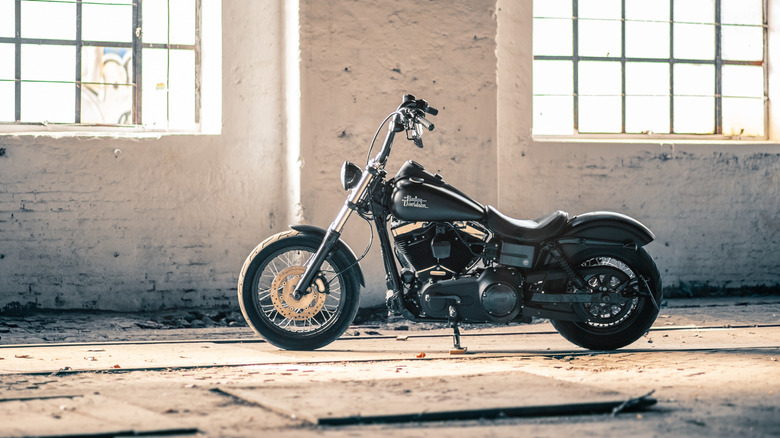Why Did Harley-Davidson Discontinue The V-Rod?
Harley-Davidson introduced the 2001 V-Rod as the founding member of its V-Twin Racing Street Custom line. Its racing heritage comes from the inspiration provided by Harley's entry into mid-1990s superbike racing, the VR1000, one of the rarest motorcycles ever built.
Another thing that makes the Harley-Davidson V-Rod special is the engine that powers the VRSC series, the Revolution V-twin. Porsche helped engineer the VRSCA V-Rod's Revolution engine, a 120-horsepower, liquid-cooled 60-degree V-twin with fuel injection and dual overhead camshafts.
However, as special as the V-Rod is, Harley-Davidson discontinued it following the 2017 model year. Like other performance cars, trucks, and motorcycles, the V-Rod most likely succumbed to ever-changing vehicle emissions standards. Two of the biggest hurdles to the V-Rod's existence were the United States Environmental Protection Agency's (EPA) Tier 3 Motor Vehicle Emission and Fuel Standards and Europe's Euro 4 emissions standards began to affect motorcycles beginning in 2017.
According to Harley-Davidson, the company's biggest market in 2017 was the United States with 147,972 sales. Europe, and the Middle East and Africa (EMEA) combined for 44,935 sales. Overall, sales in those two markets accounted for nearly 80% of the total 2017 sales for the brand.
Did Harley-Davidson discontinue other motorcycles in 2017?
The 2017 model year was also the final year for one of Harley-Davidson's most popular lines of motorcycles, the Dyna series. While losing the V-Rod was a blow to those buyers looking for something a little different, losing the Dyna line had many of the hardcore Harley-Davidson faithful searching for answers. As somewhat of a consolation prize, three of the most popular Harley Davidson Dyna model names transitioned to the Softail lineup, Fat Bob, Street Bob, and Low Rider, some of the best Softails ever built.
While there isn't a lot of difference between the Dyna and Softail frame types, it's enough that many Harley-Davidson purists were insulted. The purists likely felt that the Dyna line was a callback to the 1970s Super Glides, and thus, spiritual successors of the Harley-Davidsons of years past.
Losing the Dyna line left few options for those seeking that classic Harley-Davidson experience. While the Sportster was the closest match to the Dyna's sporty soul remaining in the lineup, it was an entry-level model looked upon as a downgrade from the Dyna. The only other option, besides settling for Softail wearing a Dyna name, was to buy one of Harley-Davidson's larger, more expensive, though less sporty, touring bikes.

